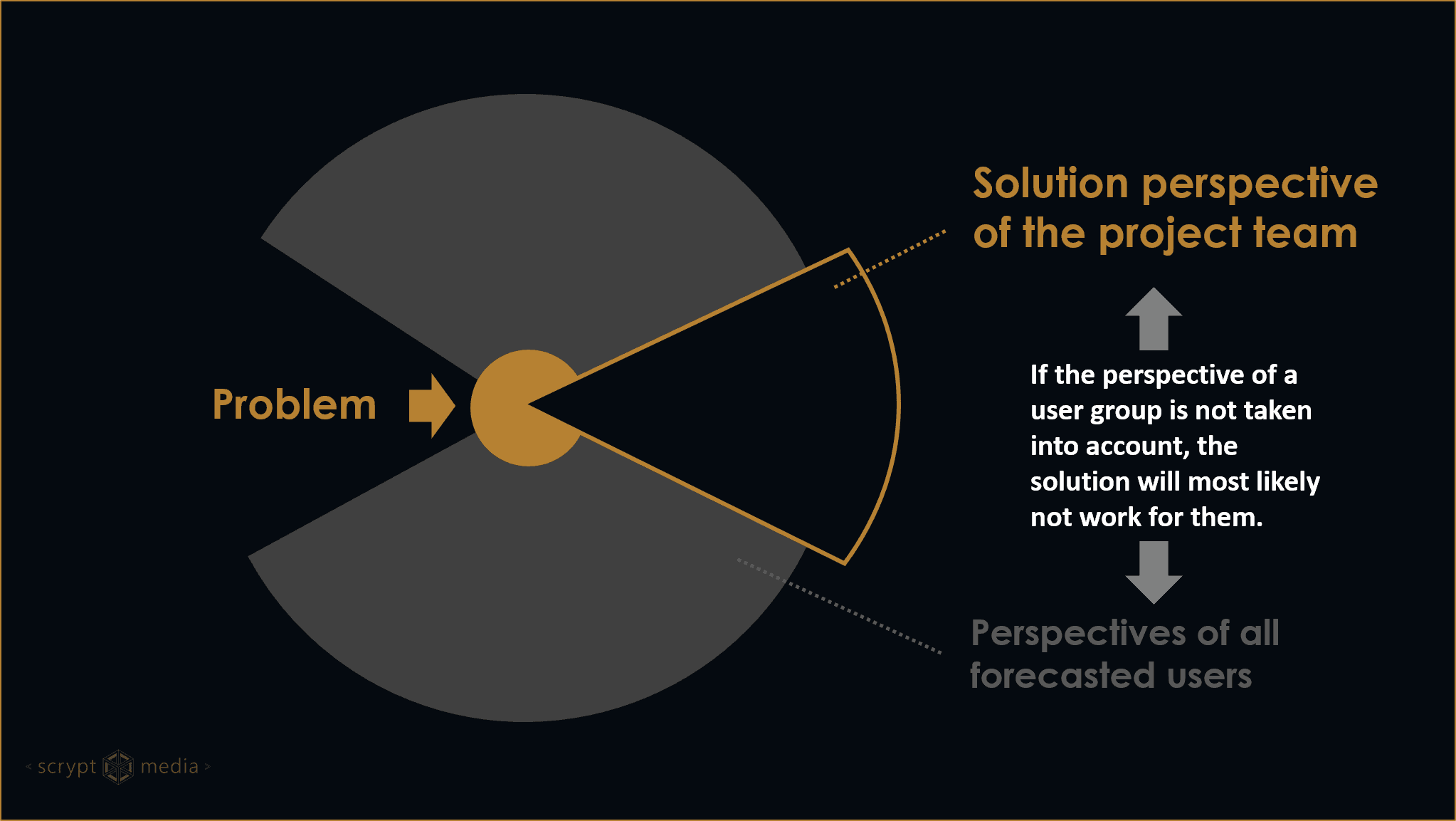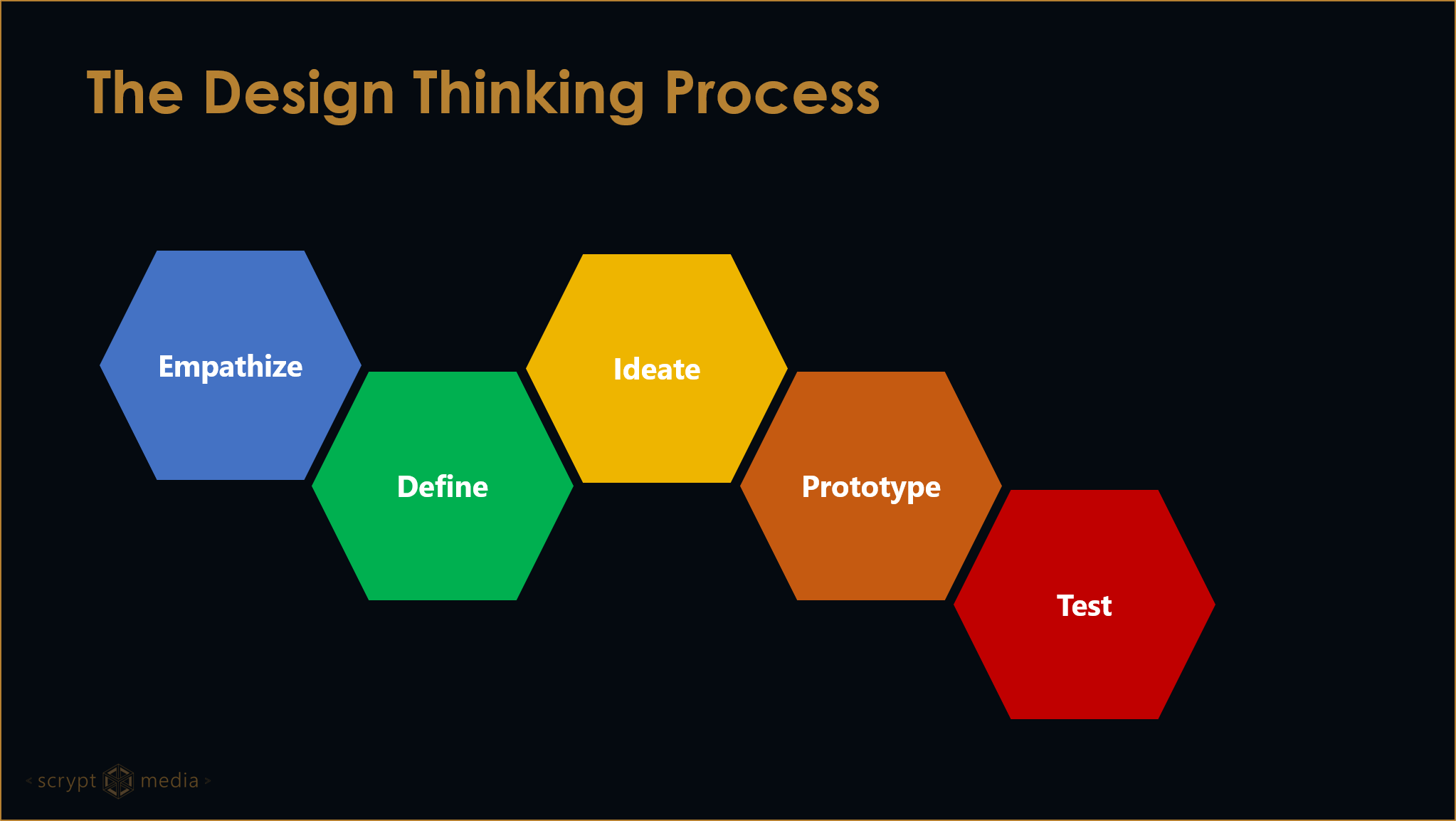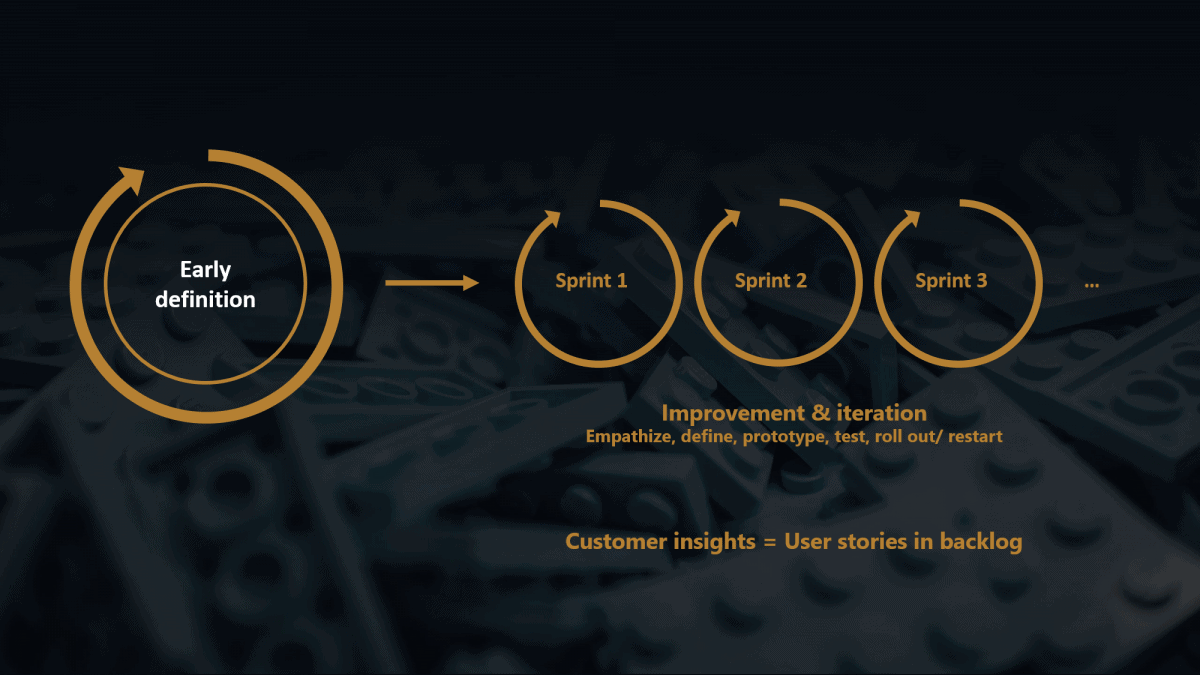Human-centred design approaches like Design Thinking have been making headlines across sectors for a while. Research found that they increase creativity, employee buy-in, and often bring superior solutions. What does that mean for projects working with emerging technologies?
The Challenge
Every project idea emerges from a unique viewpoint on a problem or difficulty. Very often, the founders are personally connected to the problem they are solving. They build a team with likeminded people, build a first prototype and test it within their circles. The team gets validations and constructive feedback from first customers, and things are going great. Everyone is enthusiastic about the new idea.
So, the founders start to think bigger and build a more aggressive business plan to attract more funds. This plan includes the projection of huge adoption rates. When the plan is put in practice, adoption is much slower than anticipated. A lot of people might even say they like the product or service, but don’t end up using it. What happened?
There are various perspectives on a problem
What happened is that the team is looking at the problem and solution from their own unique perspective. They surround themselves with a group of likeminded people that is validating the idea and specific solution.
But the ambition of the project is to be used by a broad audience early on. With the growing number of potential users, the perspectives and references with which people are looking at both problem and solution are growing as well. The solution however might not take all these viewpoints into account. Here is a little graphic to illustrate this dilemma:

What makes users look at problems in a different way?
In order to understand the different perspectives of users, it is important to understand their differences in reference. There are a lot of factors that make people look at or experience things in a different way. Here are just a few of them:
Examples of personal differentiators
- Expertise and experience
- Upbringing in terms of
- Culture
- Family traditions and views
- Gender
- Living environment
- Interests
- Personality
- Age
- Education
- Familiarity with technology
In short, the daughter of a doctor that grew up in India and went on the study and live in the UK will look at problems in a uniquely different way than the son of a farmer in Texas that lives close to his family and has the ambition to take over the family business. Are both perspectives relevant? If both are potential users, the answer is yes.

The great barriers of adoption
When are people not likely to use your product?
When the product or service contradicts a behaviour that they have already established.
Changing behavioural patterns is something that takes a lot of time and effort. It is also something that can only be done by thoroughly understanding the behaviour in the first place. Again, the kinds of behaviours we engage in on daily basis are strongly related to our personal differentiators and to where we live.
Why is this especially important in emerging tech?
Because using new technologies is often all about disruption of existing behaviours. And yes, even if the aim is to make things easier. But what if we are used to the complicated processes?
What if the behaviour is so deeply engrained in our life that we don’t even think about it anymore?
Unconscious behaviour: For they know not what they do
People might tell you that your product is a great idea, but they don’t end up using it. Are they just being nice but don’t really like it? Are they lying? Maybe. But they might also just not be aware of their own behavioural patterns.
A lot of our actions are determined by our unconscious mind. This makes gathering user feedback even more difficult, as you can’t even trust all the things that people tell you they would do. In this case, actions really speak louder than words. So how to get insights on what people will actually do with your product or service?
The dilemma: Limited budget, limited time
The larger an audience of a suggested solution becomes, the more diverse viewpoints we need to consider. Maybe the initial solution needs to be drastically adapted to fit the needs of different user groups. Maybe the team anticipated the behaviour of users in a different way.
But there are a few hurdles that especially starting projects need to overcome.
- It is hard to consider various perspectives and do in-depth research with a small team and limited budget.
- It is equally hard to invest in full solutions that might not be applicable to all users, or to change already developed projects. This is both a factor of time and cost.
How to overcome this dilemma?
The best way to overcome this dilemma is to integrate your users into your processes early on. The earlier you integrate users into product definition and development, the more attractive your products and services are going to be later on.
So how to do that?
There are two steps I want to introduce: The first step is to identify and get to know your users early on. The second step is to work with human-centred design and agile development. This step helps to integrate user insights and feedback into every aspect of the development process.

Step 1: Identify your target users and (actually) get to know them
As a first step, it is really important to understand who your users are. The first part of that is often defining who you think they are – the next step is to validate your assumptions with actual users.
What tools can you use here?
My favorite tool: Persona Map
Why is it great? Because it lets you think of your users as actual people you get to know. Give them a name, get to know them, consider them as friends and think about whether they would approve new developments at every step of the way.
How to validate it?
- Reach out to people in your network
You might already know people that qualify as different types of users. Talk to them! Get to know them and fill out your persona template with a real person in mind.
- Bring diversity into your team
The best way to bring diverse perspectives into your team? Hire them. There is no easier way to achieve initial validation on a broader level than to have a diverse group of people develop ideas in the first place.
Step 2: Work with human-centred design and agile development
In order to really build user-centricity into your product definition and development processes, it is best to integrate human-centred design at the core of your processes. One very established and known method to do this is to work with Design Thinking.
The Design Thinking process works a little bit different whether you are initially defining or improving a product or service. In the first case, you are looking to make your solution specific to your customer needs and integrated into their daily life. In the second case, you want to test and improve an already existing product or service. You might let your users use what you have, then think about improvements you can quickly test with them. Overall, you will go through the same process steps:

1. Empathize: Truly understand customer behaviour
In the first phase of the Design Thinking process, you want to go a bit further than understanding who your customers are. You want to understand why they do the things they do, what motivates them, and what problems they are facing on a daily level. This step ideally includes both interaction and observation.
2. Define: Identify barriers and patterns to overcome
In this step, you compare insights, group your observations and identify patterns, and clearly define the problems you need to solve.
3. Ideate: Brainstorm solutions
What are the best ways to overcome the problems you identified? You want to be as broad and open as possible in taking different solution perspectives into account. Nothing is too crazy or impossible in the first stage. Once you have gathered enough ideas, group them and select the ones that seem best tailored to overcome the problem. Specify those as much as possible.
For brainstorming we usually use Mural as a whiteboard for online group sessions and Milanote to collect and organise the ideas generated.
4. Prototype: Make your solution tangible
Prototyping is cumbersome and a lot of work. Does that need to be the case? Can you find some ways to make your idea specific and open for feedback without spending a lot of effort? In Design Thinking, creativity is key. You can draw out your solution, record it as a video, or build it in prototyping tools like InVision. The easier and faster you can bring your prototype into the hands of actual users, the better.
5. Test: Gather feedback
Now it is time to gather feedback. Show your prototype to potential users, and let them experiment with it. Listen to what users have to say, and observe how they interact with your prototype!
6. Update or repeat
Did your test indicate that users are happy with your idea or improvement? Perfect. You are now ready to turn it into an actual product or update. Did you get mixed or negative feedback? No problem – you did not waste a lot of time and money yet. You might need to go back to your brainstorm ideas and follow another path, or update and redefine the problem you were trying to solve with your new insights.
How does this fit into your development process?

Design Thinking and its iterative nature fits perfectly with agile development processes. In more detail, the first time you would cycle through a Design Thinking process is in your early product definition.
The outcome of this first cycle (or more than one if you need to repeat) is a tested easy prototype of your product or service. You can transform user insights and feedback into user stories for your backlog.
Throughout the development process, you can add iterations to define and test improvements or new features.
Do you need more guidance on how human-centred design could fit into your processes? Do you need help with reaching your user base? Or do you want to book a guided Design Thinking workshop? Contact our team to have a chat and explore your options.
Scrypt.Media guides emerging tech projects on their way to change the world. We bring the revolutionary ideas of our customers to life through the refinement of strategy, communication and usability. We help our customers navigate the difficulties of early stage organization, development and funding. In doing so, we help them to focus on the important thing – changing the world.
Maike Gericke
Maike Gericke is an experienced designer, strategist, innovator and marketer. Her passion for emerging technologies and social / environmental impact led her to start the innovation studio Scrypt with Khalid. Together, they rethink, research, build and teach the use of new technologies for impact.
1 Comment
Comments are closed.

[…] “Building a product fit for purpose using blockchain design principles”. Here you can read her article on the need for human-centred design in emerging […]